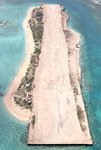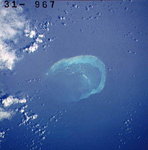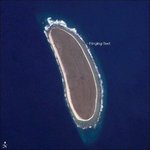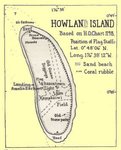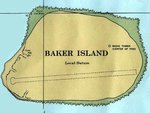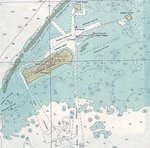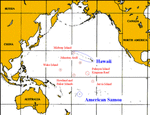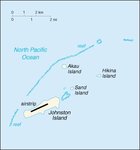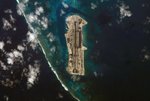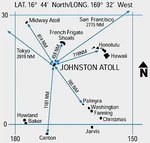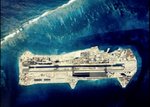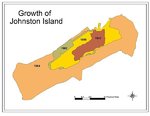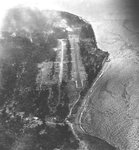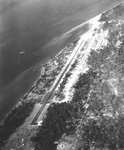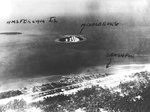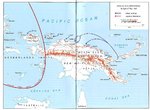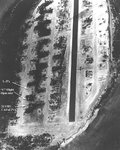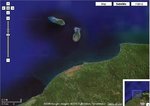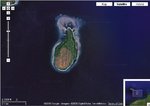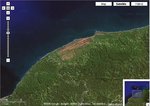syscom3
Pacific Historian
Ive been toying with doing a thread like this for some time.
Many of the airbases in the PTO were "front line" for a matter of a few months or even weeks, before being relegated to the back area's and obscurity.
Unlike the bases in the ETO/MTO which were located near populated area's, and existed in local memory for years, many PTO bases were so isolated that when they were abandoned after the war, they were quickly forgotten by just about everyone.
The first base I will mention here is one very very few people have ever heard of. Its located 1/2 way between Midway Island the hawaiian Islands.
French Frigate Schoals
Before the war started, it was nothing but a tiny 100 yard long spit of sand, populated by sea birds. During the war, enough coral was dredged up to actually provide enough land to put down a landing strip. In 1942, the Japanese fueled up a pair of sea planes for an aborted recon/bombing of Pearl Harbor.
After the war, it was used by both the coast guard as a navigation (LORAN) station and then as a missle/tracking station by various military organizations.
Now it is a wildlife refuge and home to multitudes of migratory birds and sea turtles.
Here are some websites that have more information. It really is a fascinating island.
http://www.letarc.net/ffsavion/
This has some great pictures of various aircraft landing on this tiny airfield.
http://www.radiojerry.com/ffstoday/
This is mostly for the island as it is today, a wildlife refuge. They have links to several pictures of the old eqmt left to rust on the island. Of interest, the tanks for the diesels that powered the LORAN eqmt, held TWO years of fuel supply.
http://radiojerry.com/frigate/
More pictures.
Many of the airbases in the PTO were "front line" for a matter of a few months or even weeks, before being relegated to the back area's and obscurity.
Unlike the bases in the ETO/MTO which were located near populated area's, and existed in local memory for years, many PTO bases were so isolated that when they were abandoned after the war, they were quickly forgotten by just about everyone.
The first base I will mention here is one very very few people have ever heard of. Its located 1/2 way between Midway Island the hawaiian Islands.
French Frigate Schoals
Before the war started, it was nothing but a tiny 100 yard long spit of sand, populated by sea birds. During the war, enough coral was dredged up to actually provide enough land to put down a landing strip. In 1942, the Japanese fueled up a pair of sea planes for an aborted recon/bombing of Pearl Harbor.
After the war, it was used by both the coast guard as a navigation (LORAN) station and then as a missle/tracking station by various military organizations.
Now it is a wildlife refuge and home to multitudes of migratory birds and sea turtles.
Here are some websites that have more information. It really is a fascinating island.
http://www.letarc.net/ffsavion/
This has some great pictures of various aircraft landing on this tiny airfield.
http://www.radiojerry.com/ffstoday/
This is mostly for the island as it is today, a wildlife refuge. They have links to several pictures of the old eqmt left to rust on the island. Of interest, the tanks for the diesels that powered the LORAN eqmt, held TWO years of fuel supply.
http://radiojerry.com/frigate/
More pictures.


